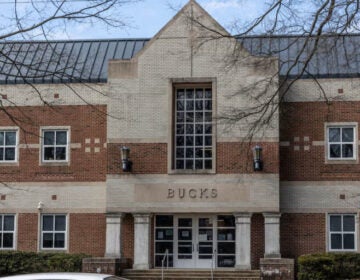Pa. school districts may be undercounting homeless students, report says
Across the country, public schools are required to identify and support students experiencing homelessness. But a new report finds that many Pa. schools may be undercounting.
Listen 1:22
(Emma Lee/WHYY)
Across the country, public schools are required to identify and support students experiencing homelessness. But a new report finds that many schools in Pennsylvania may be undercounting.
According to Pennsylvania non-profit Research for Action, nationwide, an estimated 14 out of every 100 students living in poverty are also homeless. But during the 2016-2017 school year, Pennsylvania reported just eight homeless students out of 100, and Philadelphia just five. Given high rates of poverty in Philadelphia, those numbers would be surprising, said Anna Shaw-Amoah, lead author on the report.
Pittsburgh, on the other hand, identifies 16 homeless students per 100 living in poverty, much closer to the national average.
The report authors believe even the national numbers fall short of the reality.
Many districts check student lists against local shelters or other homeless service agencies. But that leaves out a lot of kids, said Shaw-Amoah.
“That’s those who are living in hotels, those living in places not meant for human habitation, like cars, abandoned buildings,” she said. “About three quarters of homeless students nationwide are living doubled up, meaning they’re in someone’s house, living temporarily. And those students need to be counted also.”
Shaw-Amoah thinks school districts could do a better job of identifying those students by training staff to be more attuned to students’ needs.
“For teachers, for nurses, for bus drivers, and anybody that touches that student’s life, that they’re aware and attuned to the warning signs that a student may be moving from place to place or in temporary housing,” she said. “If a student is falling asleep, or very hungry, or has unexpected absences, staff need to be able to recognize those warning signs.”
Homeless students are less likely to graduate high school, and not graduating high school makes adults more likely to become homeless, so identifying those students is a first step to breaking that cycle.
WHYY is your source for fact-based, in-depth journalism and information. As a nonprofit organization, we rely on financial support from readers like you. Please give today.






